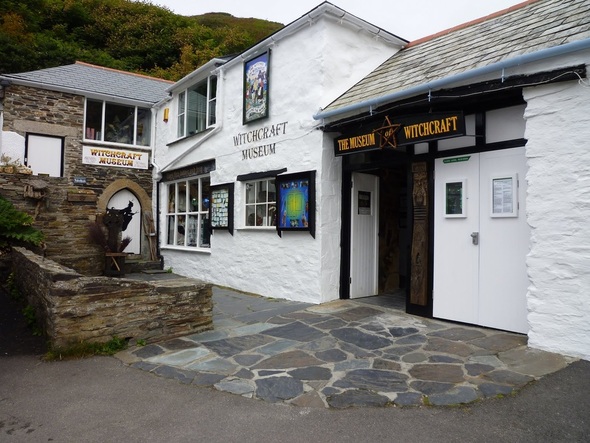|
The Breadcrumbs widget will appear here on the published site.
A Cottage Full of Wicca By Sarah Schwister QuailBellMagazine.com Last May, I ran through the fog and storms of the Dartmoor of Britain, barefoot. I studying abroad through a two-week program my school offered, and this book geek took a trip that led through her through a world of fairy tales, literature, and wonder. Like any good story, the trip brought its own shock and astonishment in unlikely places, such as Bocastle, Cornwall’s very own Museum of Witchcraft, which boasts the world’s largest selection of witchcraft relics and artifacts in the world. Rain flickered against our red floral umbrella as we walked through Bocastle, a beautiful town nestled between jarring mountains covered in garish grass. The creek muttered in the freezing rain, and my group was shivering from our wet trekking of Tintagel. Despite previewing every trip location in class the previous semester, the white cottage tucked outside of town made our jaws drop. It was, of course, the Museum of Witchcraft. A rather distant woman halfheartedly welcomed us in, as some of the other students cautiously wandered in. Discomfort floated around the group as some students were just plain not okay with this portion of our trip. The museum itself was stuffed as thick as the text in a dictionary. The first thin hallway that led us into the bowels of the house almost seemed self-mocking. It was full of kitschy Halloween decorations, medieval depictions of witches, and more than one nod to the witches of Macbeth. The museum's founder, Cecil Williamson, had met his fair share of witch skeptics, and tried to coax an open mind out of every visitor the moment they step into his museum. Starting off with the familiar helped accomplish that. Though the museum opened in 1959, the year the ban on the practice of witchcraft was lifted (before later moving to its current location in 1960), it wasn’t Williamson's first attempt at curating a collection and telling the story of witchcraft. Initially, he tried to open a museum in 1947 in Stratford-Upon-Avon (the birthplace of William Shakespeare) but was met with local opposition and was forced to abandon those plans. The first hallway opened to a mirrored wall with rocks and an alter with displays in glass cases on the left side of the mysterious, dimly lit room. Pinched hallways led into a full-room display with mannequins weaving by a kitchen fire and further rooms lined with jars of dried herbs. Every single item in the museum was given an information card. There was even a lock of hair from a “red headed virgin." Apparently if a husband kept that lock of hair and was faithful and good to his wife, the spirit world would be kind to him. The museum actually held a corner of a room showing “magic” items from Christianity (e.g., holy water) and similarities between Wicca and Christianity, such as praying to statues. The museum also had a display explaining how Wicca is different from Satanism, with an amulet of Satanism that was donated to them. Other tidbits, among many: 1. Mother Goose was a witch. 2. Wax “voodoo” dolls were actually used by witches to heal from afar by coaxing the doll to remove pain, but only with the patient’s permission (to curse, however, the witch wouldn’t need permission). 3. Reading tea leaves from a cup, like in Harry Potter, was a common practice among witches. (Go J.K. Rowling, doing your research). A common theme across the museum, which is information and mission driven, was the idea of being a scapegoat. Despite being hounded by people, almost a millennia after the burnings, hangings, and witch trials, Wiccans remain a nature-oriented, healing people, far from the evil, curse spewing caricatures society has drawn of them. Yes, you have the occasional extremists, but so does every other religion. My class and I left the museum in the pouring rain, and ran back to the safety of our coach. Once boarded, I shook the water out of my hair and turned, staring back down the path that I had followed. I could still hardly believe that that place actually existed. #Real #Witches #WitchcraftMuseum #MuseumOfWitchcraft #Wicca #EnglishMuseums Visit our shop and subscribe. Sponsor us. Submit and become a contributor. Like us on Facebook and follow us on Twitter. CommentsComments are closed.
|
|









